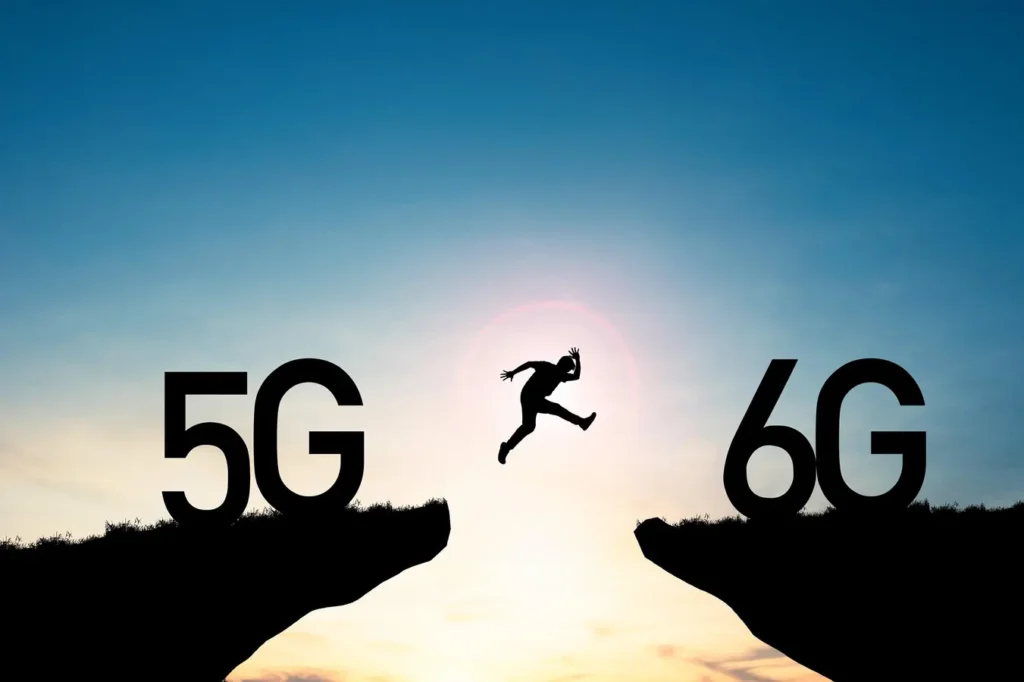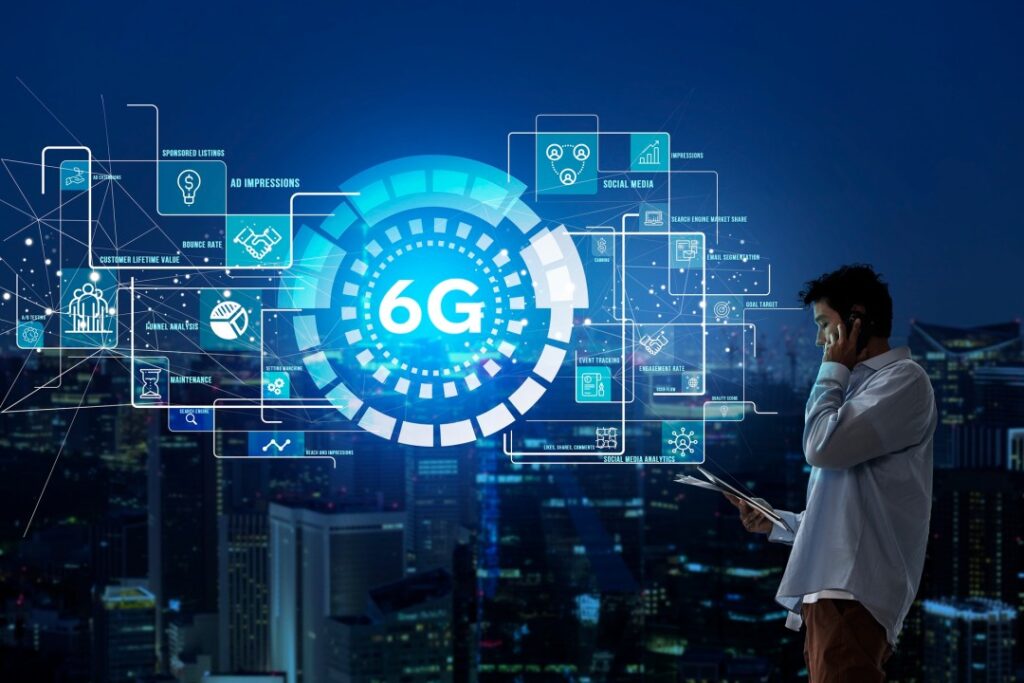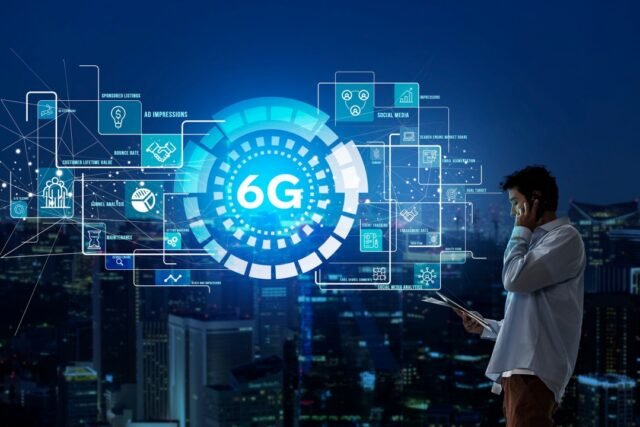The next frontier in mobile networking is already taking shape. As industries and governments around the world pour billions into research, 6G technology is emerging not simply as an evolution of 5G—but as a transformative platform poised to fundamentally reshape communication, connectivity, and the interface between the physical and digital world. Here’s what to expect, informed by current breakthroughs, global strategy, and expert insights.
Table of Contents

Beyond Speed: Ultra‑High Data Rates & Micro‑Latency
Where 5G offers gigabit speeds, 6G aims for terabit-per-second throughput. That’s potentially 100 times faster, enabling real‑time 8K/16K streaming, holographic video calls, and full XR experiences without a hint of lag.
Latency too will shrink to microseconds, not milliseconds—near‑instantaneous responsiveness is essential for remote surgery, industrial robotics, and safety-critical applications like autonomous vehicles.
AI‑Native Networks & Smart Infrastructure
Unlike earlier networks, 6G is built around artificial intelligence from the ground up. AI will design, manage, and optimise itself. Networks will self‑heal, adapt traffic dynamically, and learn from usage patterns, transforming communications infrastructure into an intelligent, efficient organism.
Project MultiX Perceived 6G‑RAN, led by the University of Cantabria, is exploring how radios can double as environmental sensors—integrating camera, radar, and base station data via AI to optimise performance in healthcare and industrial settings.
Immersive Experiences: Holography, XR & Haptics
One of the most mind‑stretching capabilities promised by 6G is immersive communication: holographic video conferencing, full-sensory virtual reality, and real‑time haptic feedback that mimics touch across distances. These will blur the lines between physical presence and digital interaction.
Education, entertainment, training, telemedicine, and remote collaboration will never look the same once these bandwidth-intensive experiences become seamless.
Global Coverage: From Satellites to Drones
6G is envisioned as a space‑air‑ground‑sea integrated network. It goes beyond terrestrial cell towers to include satellites, UAVs, and high-altitude platforms. That means true connectivity anywhere, from deserts to mountains to the open ocean.
Public‑private initiatives from China to the U.S. aim to deliver satellite Internet at 100 Gbps speeds using laser communications, such as Chang Guang’s mobile ground station and experimental satellite systems. India and Japan have teamed up at IIT‑Hyderabad to trial protocols tied to satellite‑ready NB‑IoT and V2X, targeting deployment by mid‑2020s.
Massive Connectivity for Billions of Devices
6G will support up to one million devices per square kilometre, enabling vast IoT ecosystems powering smart cities, logistics automation, and environmental monitoring at scale. Network slicing will let operators carve virtual networks tailored to service needs—zero‑lit networks for emergency services, latency-optimised slices for AR, energy‑efficient paths for sensors.

Security and Sustainability: Quantum & Privacy by Design
As data volumes explode and networks entwine with daily life, securing 6G infrastructure becomes mission-critical. Expect integration of quantum communication techniques like QKD (Quantum Key Distribution) to deliver tamper‑proof encryption over satellite-augmented networks.
At the same time, energy efficiency is baked into design—with AI-managed sleep‑states, low-power AI, and edge computing, minimising cloud trips and carbon footprint.
Industrial & Societal Transformation
Healthcare: 6G‑enabled wearable sensors, remote surgery with real‑time feedback, and distributed diagnostics will make personalised medical care globally accessible.
Smart Cities: Real-time traffic control, pollution monitoring, AI‑driven services, and emergency response systems will operate at new levels of intelligence.
Transportation & Logistics: Autonomous vehicles, smart road infrastructure, drone fleets, and digital twin-enabled logistics management promise safer, smoother operations.
Education & Work: XR classrooms, virtual labs, global collaboration hubs, and real‑time language translation will redefine remote learning and remote work.
Global Race and Governance
Countries are strategically competing to lead the 6G era. China leads in patent filings and lab breakthroughs, while India is targeting 10% of global 6G patents through its Bharat 6G Alliance, backed by government policy and industry‑academia consortia.
Germany and the EU are developing coordinated strategies to secure technological sovereignty and set global standards before 2030.
Meanwhile, the ATIS Next G Alliance (featuring AT&T, Verizon, Microsoft, Samsung, and others) is promoting OpenRAN, interoperability, and open standards to prevent monopolistic lock-in, extending those principles into space‑based architectures.
Challenges Ahead
Spectrum allocation: Accessing and licensing terahertz bands (100 GHz–3 THz) is complex, costly, and globally fragmented.
Infrastructure cost: Massive densification, edge server rollout, and satellite deployment require major capital investments.
Regulatory alignment: Cross-border standards, cybersecurity safeguards, and spectrum management must be coordinated internationally.
Digital divide: Without inclusive infrastructure planning, rural and lower-income regions risk being left behind, deepening inequity.
Security risks: As networks converge with sensing, AI, and critical services, vulnerabilities multiply. Ensuring privacy and protection remains paramount.
What to Expect Timeline-wise
Industry roadmaps point to initial commercial 6G rollouts around 2030, with standardisation and testing phases underway now. Technical studies by 3GPP begin in late 2025, aligned with IMT‑2030 frameworks under the ITU. Testbeds in India, Japan, Europe, and global consortia like Huawei/Vivo/Samsung are actively exploring prototype spectrum, RAN and AI integration now.
By 2030–2032, early commercial infrastructure may appear in major economies, with broader deployment by mid‑2030s.

Conclusion
The question isn’t simply faster downloads—it’s about a fundamental shift in how we communicate, collaborate, and experience reality. When communication becomes immersive, intelligent, global, and secure, we enter a new era where every device, every interaction, and every environment becomes part of a smarter network.
From remote surgery in Lagos to AI‑managed smart grids in Europe, from holographic classrooms to drone‑ready logistics, 6G stands to redefine modern life—and this transformation begins now.
Join Our Social Media Channels:
WhatsApp: NaijaEyes
Facebook: NaijaEyes
Twitter: NaijaEyes
Instagram: NaijaEyes
TikTok: NaijaEyes





